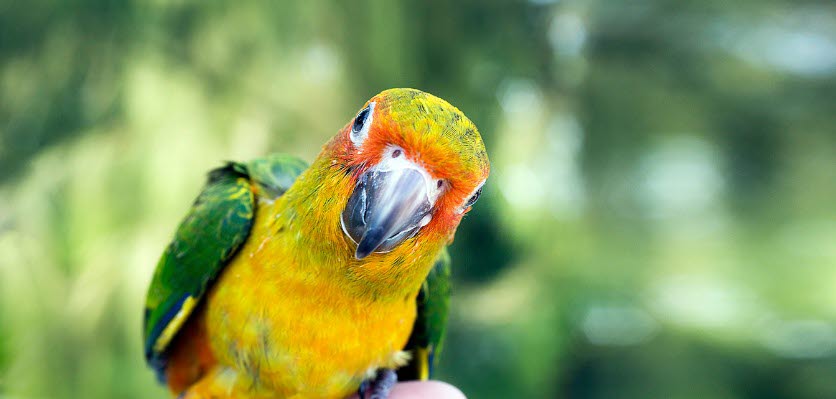Teach your bird to be on its best behaviour

Birds can make great pets, but with so many species kept as companions, it’s a good idea to research your potential pet before you bring it home.
So how do you get started on the right foot?
Firstly, it’s important to remember that there are still only a limited number of generations between your bird and its wild ancestors. Your pet is at best a tamed wild bird that wants to behave like its wild counterparts and should be given the opportunity to develop physically, mentally and emotionally.
As well as providing your feathered friend with food, water and appropriate shelter you also need to protect them from fear and distress and provide them with the opportunity to express normal behaviour, which includes socialising, chewing, biting, foraging for food, climbing and flying – after all, they are birds.
Most birds are very social animals and live in a social group. As with any group, there has to be someone who decides what the group should do and what is best for the group. Leadership is based on abilities and deference, not assertiveness or force. This means always giving your bird kind, clear and consistent prompts to help them learn what is expected right from the first moment you bring them home. These cues need to be reinforced throughout its life.
Parrots and cockatoos
Many of the birds kept as companions are parrots and cockatoos (Psittaciformes). They are intelligent, usually social and often long-living pets. Their behaviour is a complex interplay between their genetics and physiologic make up, their past experience and the situation they are currently in.
The importance of setting your bird up to develop well and learn to be a great pet cannot be overstated. They learn a great deal during their early lives particularly in the nest, during fledging and in the juvenile period. It is critical that this time is handled well and they are fed properly, socialised appropriately and taught all the skills they will need to thrive in our world.
Many of the behavioural issues that these birds develop can be triggered by poor management, handling and environmental manipulation during the early stages of their life.
Some of the problems vets commonly see include:
- persisting with infantile behaviours, such as begging for food or attention when they already have it
- excessive vocalisation or screaming
- aggression towards other birds or humans
- feather plucking, chewing and self-mutilation
- breeding problems.
Many of these problems can be overcome or stopped from developing in the first place through proper training and care. For specific information and advice on how to look after and train your bird you should consult your veterinarian.
Training your bird
The best way of training your bird involves showing the bird what you want, by prompting, demonstrating the skill with another bird or luring them with a treat and then rewarding them when they perform the desired behaviour.
This type of training is superior to other training methods that may involve aversive techniques. It shows the bird precisely what is required, helps to minimise aggression, and builds a better and stronger bond between you and your bird.
Cages and personal space
Your bird needs to sleep from dusk to dawn and have a quiet place away from the glare of the house lights to get a good night’s sleep.
This cage or perch becomes your bird’s personal space and provides it with a safe haven. Cage and perch training can have many benefits, including:
- preventing damage if the bird is destructive when investigating its environment
- helping with house training your bird
- providing a safe area for your bird when you are unable to supervise them or when they are resting or sleeping
- enabling your bird to be a part of the family rather than living outside in an aviary
- helping with future hospital stays and boarding.
Routine
Most birds thrive on routine. This starts with feeding at set times. It is best not to leave your bird alone when eating so they learn that having people around food is a good thing.
Putting tasty treats into your bird’s bowl as they are eating will help your bird look forward to people being around at meal times and help them become less protective of food.
The routine must extend to regular interaction with its social group and regular sleep.
A well socialised bird is a bird that accepts other birds and people without becoming frightened or aggressive. It is also important to expose your bird to many experiences and things during the fledging and juvenile periods in a non-threatening way so your bird knows these experiences are just a part of normal life.
For more advice about training your bird to be on its best behaviour talk to your veterinarian or veterinary behaviourist.
